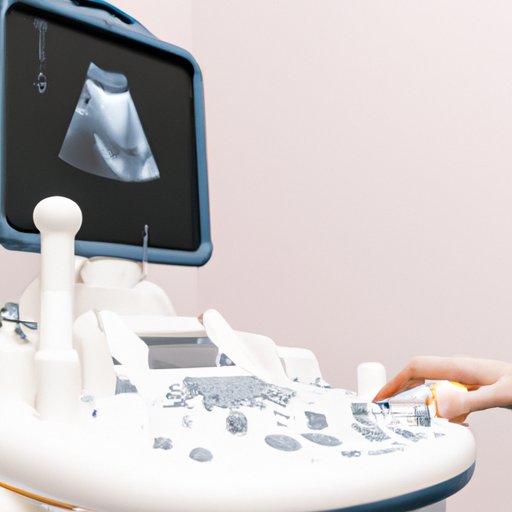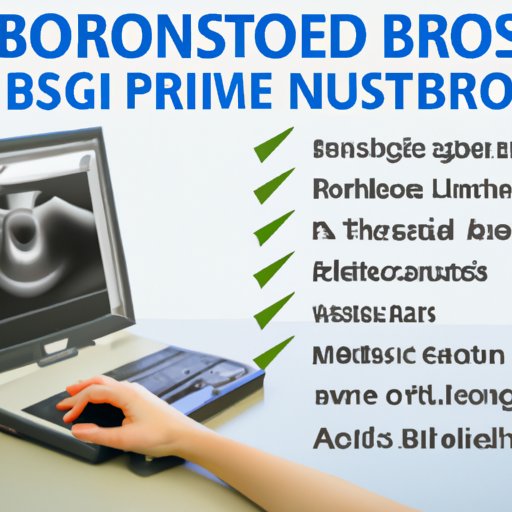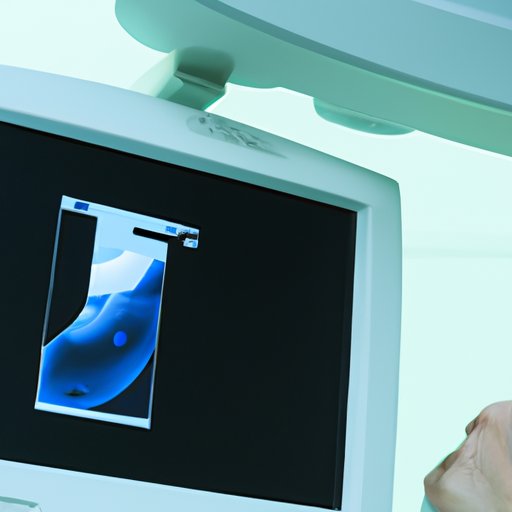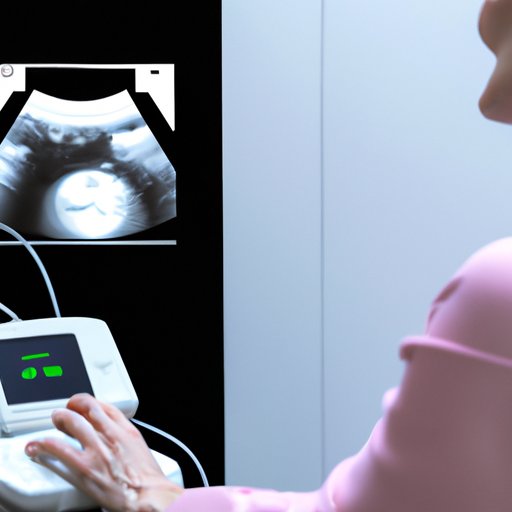Introduction
Automated breast ultrasound (ABUS) is a revolutionary diagnostic tool used to detect breast cancer. It uses sound waves to create an image of the breast, allowing doctors to identify any abnormality or tumor present. ABUS has the potential to identify breast cancers at an earlier stage, increasing the chance of successful treatment and better outcomes for patients.

Exploring Automated Breast Ultrasound: What It Is and How It Works
ABUS is a type of imaging that uses sound waves to create a detailed picture of the breast tissue. During the procedure, a transducer is passed over the breast, emitting and receiving sound waves. These sound waves are then processed by a computer to create a 3-D image of the breast. This image can then be analyzed by a doctor to identify any abnormalities or tumors present.
The technology used in ABUS is similar to traditional ultrasound, but it provides more detailed images due to the use of high-resolution transducers. The transducer is able to capture more information from the breast tissue than a standard ultrasound machine, resulting in clearer images.
ABUS has the ability to detect changes in the breast tissue that may not be visible on mammograms. It is particularly useful for women with dense breast tissue, as mammograms cannot always provide accurate results for these women. ABUS is also beneficial for younger women, as their breasts tend to be denser and therefore more difficult to image using mammography.
Automated Breast Ultrasound: Reducing the Risk of Breast Cancer Diagnosis
Early detection of breast cancer is essential for successful treatment. By identifying any suspicious lesions or tumors at an early stage, doctors can take action to prevent the cancer from spreading. Regular screenings are recommended for all women over the age of 40, and ABUS can help reduce the risk of a late diagnosis.
ABUS can detect tumors up to two years before they can be seen on a mammogram. It is also more sensitive than mammography, meaning it can pick up on small lesions that may be missed by other imaging methods. Additionally, ABUS is non-invasive and does not require radiation, making it a safer option for many women.

A Comprehensive Guide to Automated Breast Ultrasound
Anyone considering having an ABUS screening should speak to their doctor about the risks and benefits. Before the procedure, the doctor will ask questions about the patient’s medical history and perform a physical examination. They may also order additional tests such as a mammogram or MRI to get a more comprehensive view of the patient’s health.
During the ABUS procedure, the patient lies down on a padded table and the transducer is passed over the entire breast area. The procedure takes approximately 20 minutes and is usually painless. After the procedure, the images are analyzed by a doctor and the results are discussed with the patient.
Automated Breast Ultrasound: Benefits and Limitations
ABUS offers many advantages over traditional methods of breast cancer detection. It is non-invasive and does not require radiation, making it a safer option for many women. Additionally, ABUS is more sensitive than mammography, meaning it can detect small lesions that may be missed by other imaging methods.
However, there are some disadvantages to ABUS. The procedure is more expensive than mammography and it is not available everywhere. Additionally, the results of an ABUS screening may not always be accurate, as the images can be difficult to interpret. In some cases, additional tests may be required to confirm the results.

The Role of Automated Breast Ultrasound in Breast Cancer Detection
ABUS is an important tool for early detection of breast cancer. It can detect small tumors that may be missed by traditional imaging methods and can identify cancers at an earlier stage. Early detection can lead to better outcomes for patients, as the cancer can be treated before it has had a chance to spread.
In addition, regular ABUS screenings can help to reduce the risk of misdiagnosis. By providing more detailed images of the breast, ABUS can help to accurately diagnose any abnormalities present. This can lead to quicker and more effective treatment for patients.
Automated Breast Ultrasound: A Breakthrough in Early Breast Cancer Detection
Current research is exploring the potential applications of ABUS in the early detection of breast cancer. A recent study published in the journal Radiology found that ABUS was more accurate than mammography in detecting small tumors in women with dense breasts. Additionally, the study found that ABUS was more effective at detecting invasive cancers.
Researchers are also looking into the potential for ABUS to be used as a screening tool for women at high risk of developing breast cancer. If successful, this could lead to more accurate diagnoses and better outcomes for these patients.
Conclusion
Automated breast ultrasound (ABUS) is a revolutionary diagnostic tool used to detect breast cancer. It is more sensitive than mammography, meaning it can pick up on small lesions that may be missed by other imaging methods. Additionally, ABUS is non-invasive and does not require radiation, making it a safer option for many women. Current research is exploring the potential applications of ABUS in the early detection of breast cancer, and if successful, this could lead to more accurate diagnoses and better outcomes for patients.
(Note: Is this article not meeting your expectations? Do you have knowledge or insights to share? Unlock new opportunities and expand your reach by joining our authors team. Click Registration to join us and share your expertise with our readers.)
